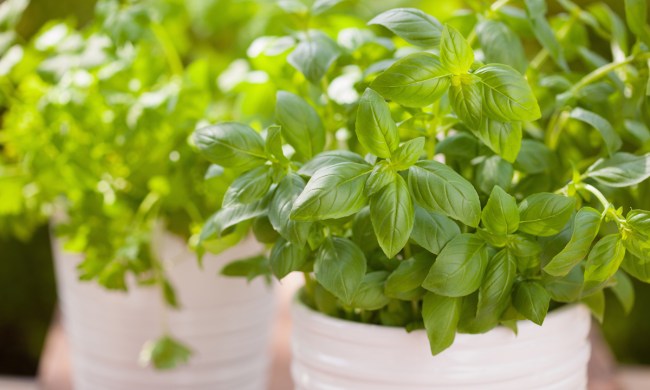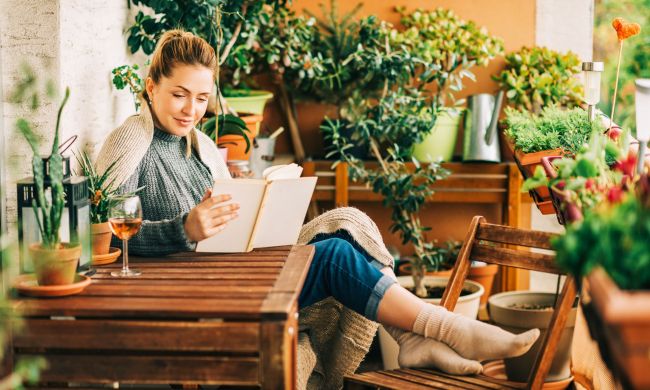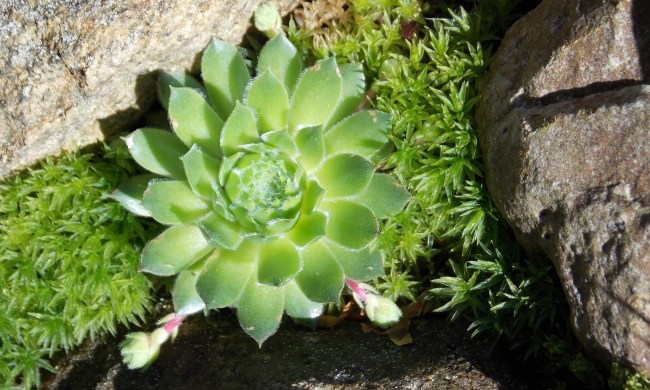Some vegetables are more suited to grow in cooler months than others. It all depends on their growing conditions and the kind of environments they prefer. If you want to extend your harvest, the easiest way is to mimic the vegetables’ ideal environment indoors. Whether in your home or in a greenhouse, there are plenty of vegetables to plant in November for fresh veggies all winter. Here are a few ideal vegetables to plant in November, but there are many others beyond them if these aren’t up your alley.
Rhubarb

Growing rhubarb in containers during the winter is possible, so long as you have a large enough pot to accommodate the plant. With rhubarb, depth is more important than width (depending on how many you want per pot) because of its large root system. You want to make sure that you select pots or containers that are sturdy, have good drainage, and are at least 20 inches deep. To the same effect, the soil should be designed for good draining to avoid drowning or rotting the plant. A healthy rhubarb could live and produce for up to 10 years if you play your hand right.
Rhubarbs are relatively easy to care for outdoors, and not much more difficult grown indoors in pots. The growing conditions are relatively the same, but you want to be sure to water close to the soil near the leaves so that the rhubarb can absorb the water as easily as possible. If you find that your soil is having trouble with water retention, you can add a thin layer of mulch on top.
Rhubarb is really an easy plant to care for, whether grown in a container or in the garden plot. Keep in mind that any plant grown in a pot will dry out more quickly than those in the garden, especially during heat spells. Water near the soil to keep the leaves dry. You can also add 1 to 2 inches of mulch, like grass clippings or bark chips, on top to help your soil retain water.
Peas

As with other plants grown indoors in the winter, you’ll likely have to start with some seeds instead of seedlings. Think ahead when selecting pots for your peas, as the plant will start small but needs room to grow and be able to produce. If your space allows, look for pots that are 6 inches or larger to sow the seeds in. This gives you a better chance of avoiding repotting the plants during the winter.
Since there is less light come November, you’ll want to consider setting up grow lights to help supplement the natural lighting. When you grow peas, your plants will need up to 10 hours of good light a day, so it’s best to select a bright space for your plants where you can turn on the grow lights as needed (and they’ll help especially on cloudy, gray days). If you happen to have a window that receives full light for 8 hours a day, that will suffice and you won’t have to worry about taking up space with grow lights for your peas.
Once your peas begin to flower and produce pods, you can start to harvest. The plants should keep producing for several months, hopefully giving you a fruitful reward for your labor. We recommend picking the pods as soon as they’re ready. You can pick them when they’re smaller or wait until they’ve reached full size.
Chili peppers

Hot chili peppers are great vegetables to plant in November. They’re easy to grow inside, and each one will give you a burst of heat during the colder months. Some varieties are more successful indoors than others, so keep that in mind when picking which one to grow in containers. Varieties like ornamentals don’t require as much space as a larger chili might, so it’s also important to take into account how much space you can set aside for growing your indoor crop.
Although most types prefer a warmer environment, they can still grow in moderate temperatures. As long as your place has plenty of sunlight or you can supplement your natural light with grow lights, you should have no trouble keeping these plants alive indoors during the winter. Chili pepper plants prefer several hours of sunlight a day, and too little sunlight can result in narrow stems. If this starts to happen, try moving them to a brighter area and see how they do.
Carrots

November can be a productive time for planting carrots, as long as you’re able to give your plants at least six hours of sunlight a day. Fall can be ideal for carrots, as they need a bit of warmth to germinate, but also some cold to produce healthy roots. Plus, they don’t take up much room. They do take a while to germinate, so be patient if you’re growing them during the tail end of the year. Sow your seeds directly into the ground, if you can, and make sure to give each carrot plenty of room to grow. If you’re growing your carrots indoors, use a big tub container and expect your harvests to be smaller. Water your carrots one inch a week.
During late fall, carrots grow best in warm areas, but some mulching can help you extend your growing season if you live somewhere colder. The good news is that carrots can handle light freezes. In fact, they may even taste a bit sweeter with some frost.
Lettuce

Leafy greens like lettuce, kale, and cabbage are incredibly easy and rewarding to grow indoors. You can start your lettuce from seeds, or regrow it from a leftover stem. Starting from seeds will give you an entire head of lettuce to eat, while regrowing from a stem will only give you a few extra leaves.
However, regrowing lettuce from the stem is an easy way to extend your groceries if you tend to buy lettuce heads for salads! When starting from seeds, simply place them in well-draining soil, find a sunny spot for them to sit, and water them when the soil is dry. Remember to keep the seeds and seedlings warm while they grow!
Even in November, you’ll be able to enjoy fresh vegetables and harvests throughout the colder months if you know how to play your cards right. Give your plants the right conditions and proper care, and they’ll provide you with as much as they can.



